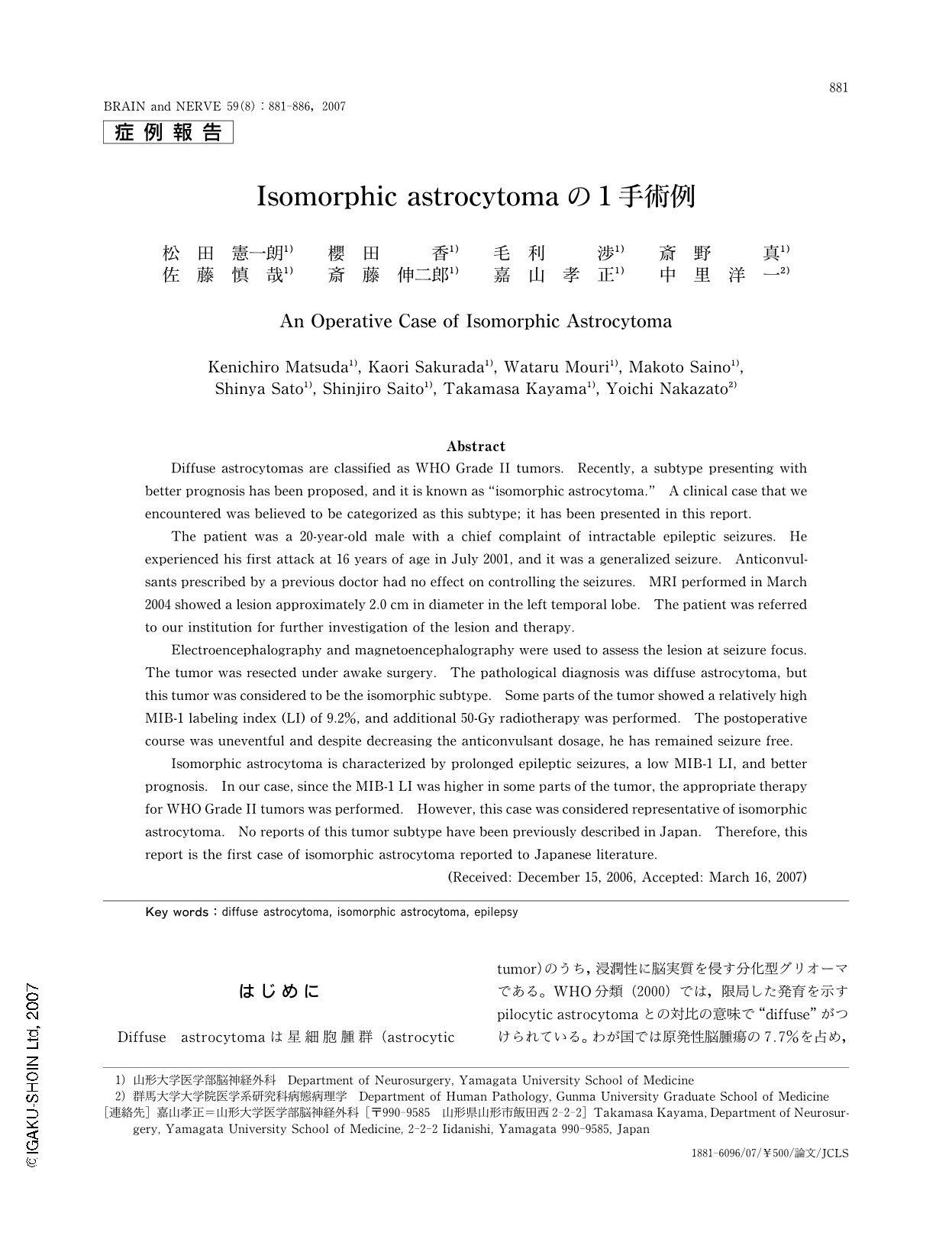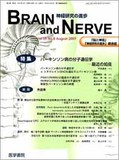- 有料閲覧
- 文献概要
- 1ページ目
- 参考文献
はじめに
Diffuse astrocytomaは星細胞腫群(astrocytic tumor)のうち,浸潤性に脳実質を侵す分化型グリオーマである。WHO分類(2000)では,限局した発育を示すpilocytic astrocytomaとの対比の意味で“diffuse”がつけられている。わが国では原発性脳腫瘍の7.7%を占め,25~59歳に好発する。大脳半球,特に前頭葉に多く,次いで側頭葉,頭頂葉に発生する。臨床悪性度はWHO GradeⅡに属する。組織学的には3つの亜型に分類され,①線維性(fibrillary),②原形質性(protoplasmic),および③肥胖性(gemistocytic)星細胞腫がある。症状としては,脳実質へのびまん性の浸潤によりさまざまな局所症状が出やすく,頭蓋内圧亢進による症状は初期には出にくい。てんかん発作を起こすことが多いことも特徴の1つである1)。
これまでdiffuse astrocytomaと診断されていた星細胞腫のなかに,長期のてんかん歴を持ち,diffuse astrocytomaに比べて良好な予後をたどる一群,すなわちisomorphic astrocytomaが存在するとの報告がなされるようになった2-4)。今回われわれは,このisomorphic astrocytomaと考えられた1例を経験したので報告する。
Abstract
Diffuse astrocytomas are classified as WHO Grade II tumors. Recently,a subtype presenting with better prognosis has been proposed,and it is known as “isomorphic astrocytoma.” A clinical case that we encountered was believed to be categorized as this subtype; it has been presented in this report.
The patient was a 20-year-old male with a chief complaint of intractable epileptic seizures. He experienced his first attack at 16 years of age in July 2001,and it was a generalized seizure. Anticonvulsants prescribed by a previous doctor had no effect on controlling the seizures. MRI performed in March 2004 showed a lesion approximately 2.0 cm in diameter in the left temporal lobe. The patient was referred to our institution for further investigation of the lesion and therapy.
Electroencephalography and magnetoencephalography were used to assess the lesion at seizure focus. The tumor was resected under awake surgery. The pathological diagnosis was diffuse astrocytoma,but this tumor was considered to be the isomorphic subtype. Some parts of the tumor showed a relatively high MIB-1 labeling index (LI) of 9.2%,and additional 50-Gy radiotherapy was performed. The postoperative course was uneventful and despite decreasing the anticonvulsant dosage,he has remained seizure free.
Isomorphic astrocytoma is characterized by prolonged epileptic seizures,a low MIB-1 LI,and better prognosis. In our case,since the MIB-1 LI was higher in some parts of the tumor,the appropriate therapy for WHO Grade II tumors was performed. However,this case was considered representative of isomorphic astrocytoma. No reports of this tumor subtype have been previously described in Japan. Therefore,this report is the first case of isomorphic astrocytoma reported to Japanese literature.

Copyright © 2007, Igaku-Shoin Ltd. All rights reserved.


